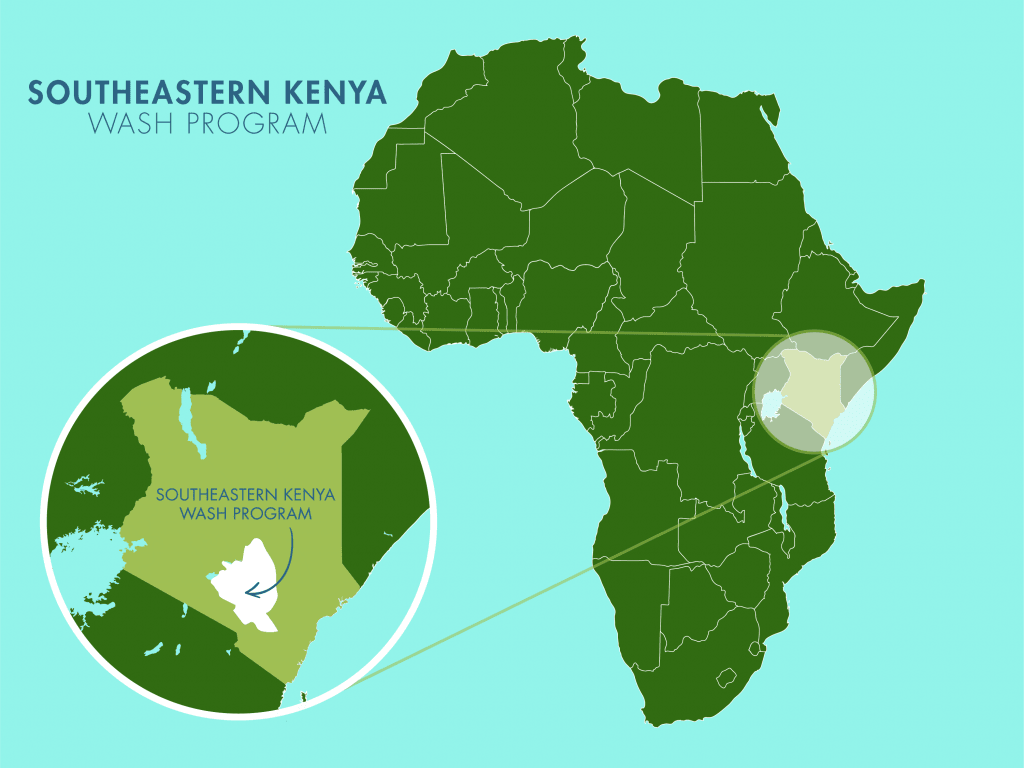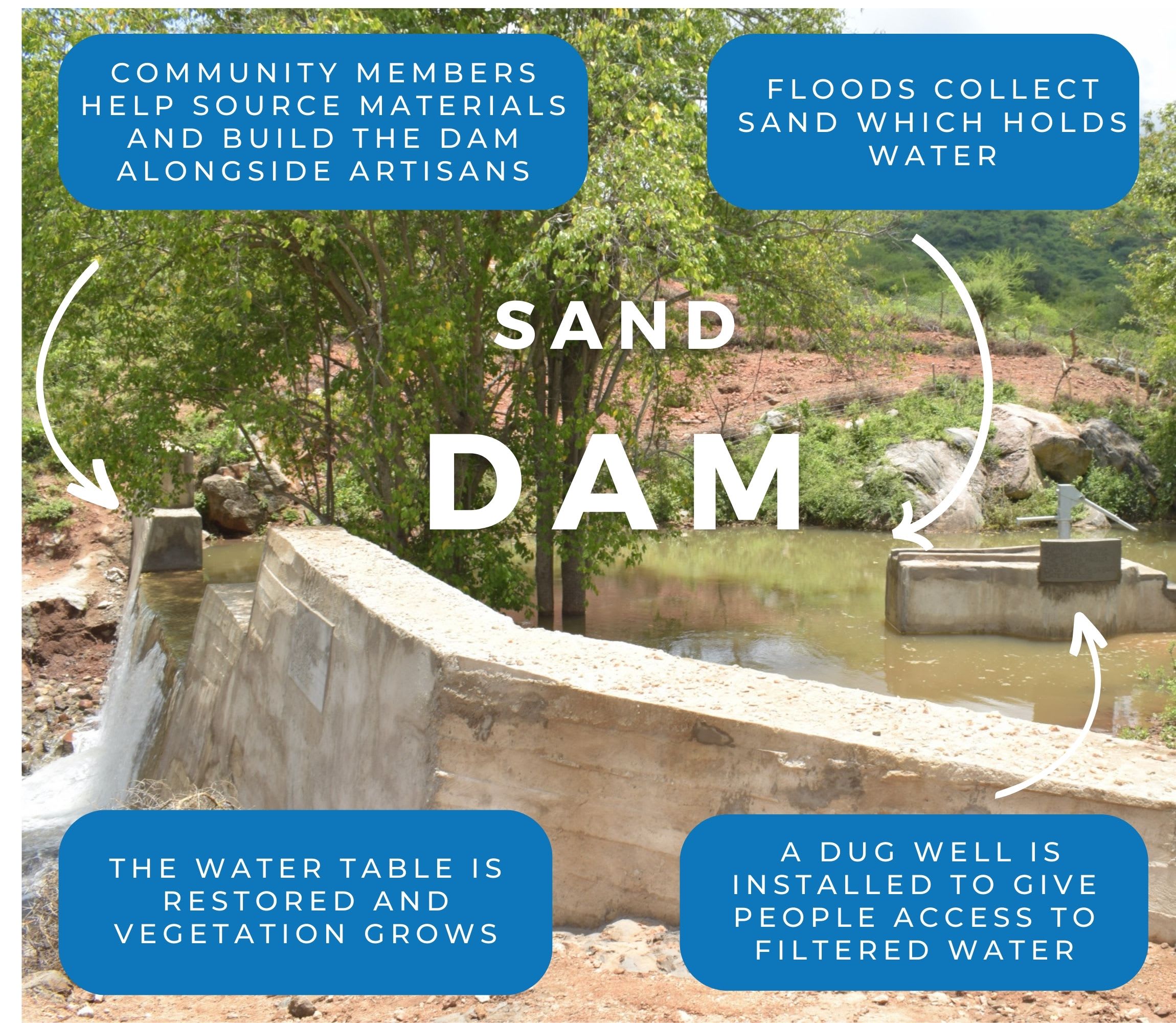The 700 residents of Katambauku Makua rely on a single, distant dug well as their only source of water. Each day, they spend a minimum of two hours making the exhausting round trip to collect it. This daily burden disrupts their routines, taking away valuable time that could be used for work, education, or caring for their families. While water is essential, the effort required to access it comes at a high cost to the community’s well-being and productivity.
Sadly, after expending so much energy to collect water people risk their health each time they consume it because the well is open to contamination. It is a high cost to pay but without another option people have no choice.
"The hand-dug well easily becomes contaminated with pathogens, including bacteria, viruses, and parasites from animal waste, runoff, and human activity. This has led to gastrointestinal illnesses. Frequent illnesses due to contaminated water has led to malnutrition, as individuals are unable to absorb nutrients effectively and lose their appetite when ill. Ongoing health issues has led to higher medical expenses for families and strained local health care," reported Field Officer Alex Koech.

The unprotected dug well.
As Alex described, this water crisis is a whole community issue.
Sixty-one-year-old farmer Josephine Ndanu is unfortunately familiar with the consequences of drinking dirty water.
"Although water-related illnesses are common in our community, it is always a discouraging moment when it occurs. Like recently, when one of my children complained of stomach pains, she would not eat anything because she would vomit, and I had to take her to a dispensary for medication. Despite my paltry income, I cannot compromise on my little one's health and well-being."

Josephine.
"Medication is costly for us because the dispensary is located far away, and I have to pay a motorcycle to carry us and back home. Treatment is also costly because I have to use my little available funds that would rather be used on other crucial elements, like household goods or school fees. The treatment entails over-the-counter drugs that we have to purchase by cash."
When one falls ill, the whole family is affected, making the endless cycle even more damaging.
"My children cannot go to school when they are still sick because the school is still far away and [they] cannot be comfortable in class. I would have to spend my time to ensure my little ones receive medication, thus I would not be able to fetch water for the family, herd my livestock, or work in my farm."
Josephine is resilient, though she struggles through every day of the water crisis; she won't give up.
"It is an unfortunate situation for all of us, but the only available water is mostly contaminated. I think that we are very unfortunate, but this is where we live, and we only have to work towards a better future while persevering with this pitiful moment."
When we asked Josephine what she would do if she had ready access to water, she replied, "I would be using my time to conduct my household duties like cleaning, working on the farm, or taking care of my goats and cows."
"Water is pertinent for me, especially because my livelihood depends on farming. We reap very little from our farms due to frequent droughts, the crops dry up, and even our cows lack enough water to drink or have to walk too far for water, leading to exhaustion. I also need water for hygiene at home, which has been adversely affected by the rampant water scarcity in our region. Adequate water availability would restore dignity by improving our levels of income and food security because we would reap more from our farms and our livestock would exhibit better yields," she continued.

Josephine traveling from the water source.
Josephine and the other community members living in the Katambauku Makua Community need a solution.
We have a plan.
Installing a sand dam in the community will allow water to accumulate in the riverbed and provide water for an attached well, enabling people to quickly and efficiently collect water near their homes so that they can attend to other important tasks of the day. The water will also be naturally filtered, allowing people to consume it without constantly battling water-related illnesses.
Solving the water crisis in this community will require a multifaceted system that will work together to create a sustainable water source that will serve this community for years to come.
Steps Toward a Solution
Our technical experts worked with the local community to identify the most effective solution to their water crisis. Together, they decided to construct a sand dam and a protected dug well.
Sand Dam
Sand dams are sought-after, climate-smart, and lasting water solutions providing hope and resilience to communities in arid Southeastern Kenya. Think of them like giant sandboxes constructed in seasonal rivers that would typically quickly dry up after the rainy season. Instead of holding water like traditional dams, they collect sand and silt.
When infrequent rains do come, these dams catch a percentage of the river's flow, letting most of the water continue downstream to other communities. But here's the magic: the sand they collect acts like a natural filter, holding onto water long after the river's gone dry. Then, wells are constructed nearby, creating a reliable water source even during the driest times.
And the benefits don't stop there! In communities impacted by climate change, sand dams replenish groundwater and prevent soil erosion. Even during severe droughts, the consistent water supply from these sand dams allows farmers to thrive, giving way for enough food not only for their families but also to sell in local markets.
The most remarkable aspect of sand dams is how they involve the local community every step of the way, giving them a sense of ownership and pride in solving their own water shortage and managing their own water resources.
This sand dam will be connected to a protected dug well to make the water more accessible.
Community Education & Ownership
Hygiene and sanitation training are integral to our water projects. Training is tailored to each community's specific needs and includes key topics such as proper water handling, improved hygiene practices, disease transmission prevention, and care of the new water point. Safe water and improved hygiene habits foster a healthier future for everyone in the community.
Encouraged and supported by our team's guidance, the community elects a water user committee representative of its diverse members. This committee assumes responsibility for maintaining the water point, organizing community efforts, and gathering fees to ensure its upkeep.

 Sand Dam
Sand Dam
 Rehabilitation Project
Rehabilitation Project


















